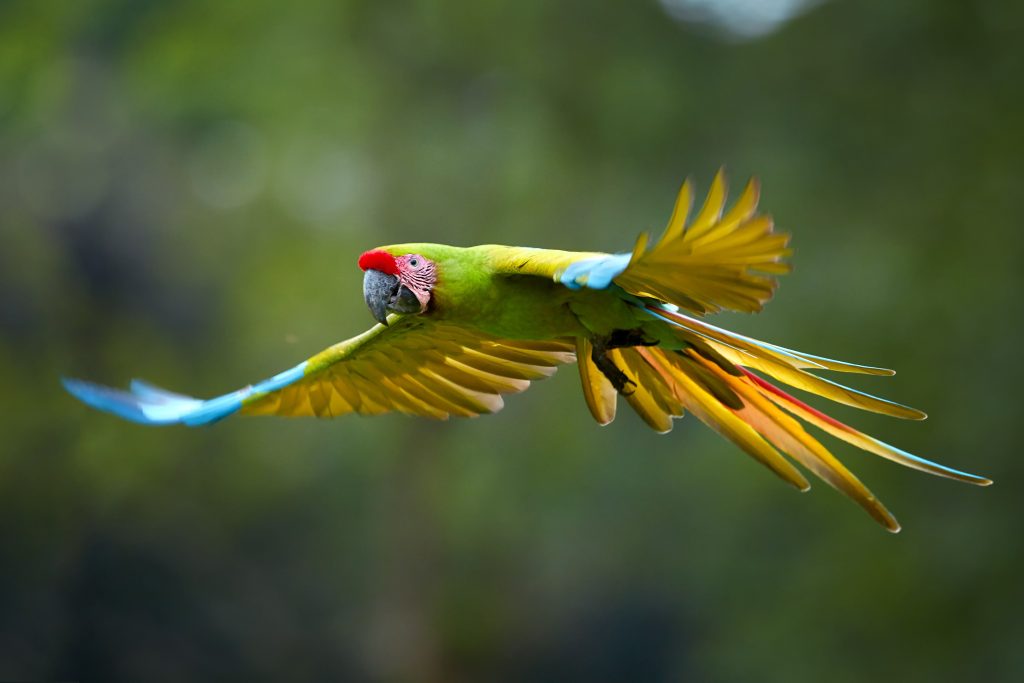The Recovery of the Critically Endangered Great Green Macaw
“Witnessing these magical birds up close is an incredibly emotional experience. The macaws glide effortlessly, sometimes so close that you can feel the wind from their powerful wings. It’s truly a once-in-a-lifetime encounter.”
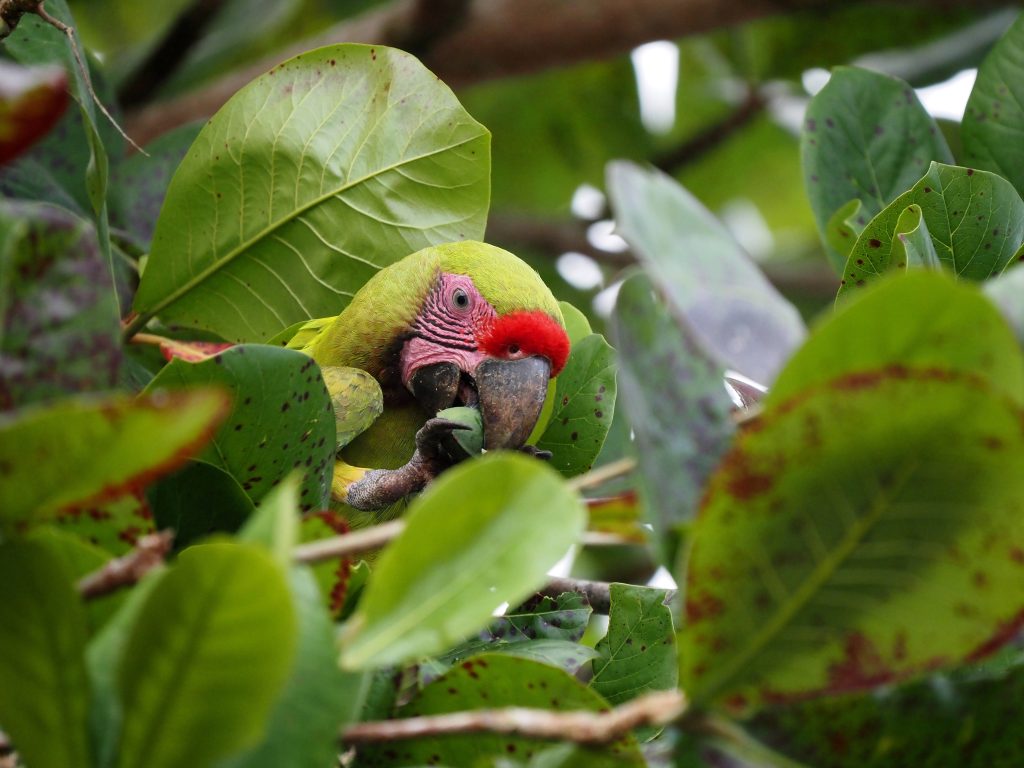
The Great Green Macaw Reintroduction Project
The Great Green Macaw Reintroduction Project is located on the South Caribbean coast of Costa Rica, near Puerto Viejo. Managed by the not-for-profit Ara Manzanillo, its primary goal is to aid the critically endangered Great Green Macaw population in their recovery and flourishing.
Your guests can visit the Great Green Macaw Reintroduction Station for an incredible nature experience.
What happens during a visit to the Reintroduction Station?
The Manzanillo fieldstation is located in a primary tropical rainforest 100 m above sea level. The tour takes you to a lookout point with spectacular views of the forest and the sea.
A local guide with extensive knowledge of the area will give a brief presentation on these rare and stunning feathered creatures, and the efforts of the project to reproduce and reintroduce them into their natural habitat. Then, you’ll make your way up a hill to the observation platform.
As you sit in peaceful silence, a sense of serenity washes over you, similar to a deep meditative state.
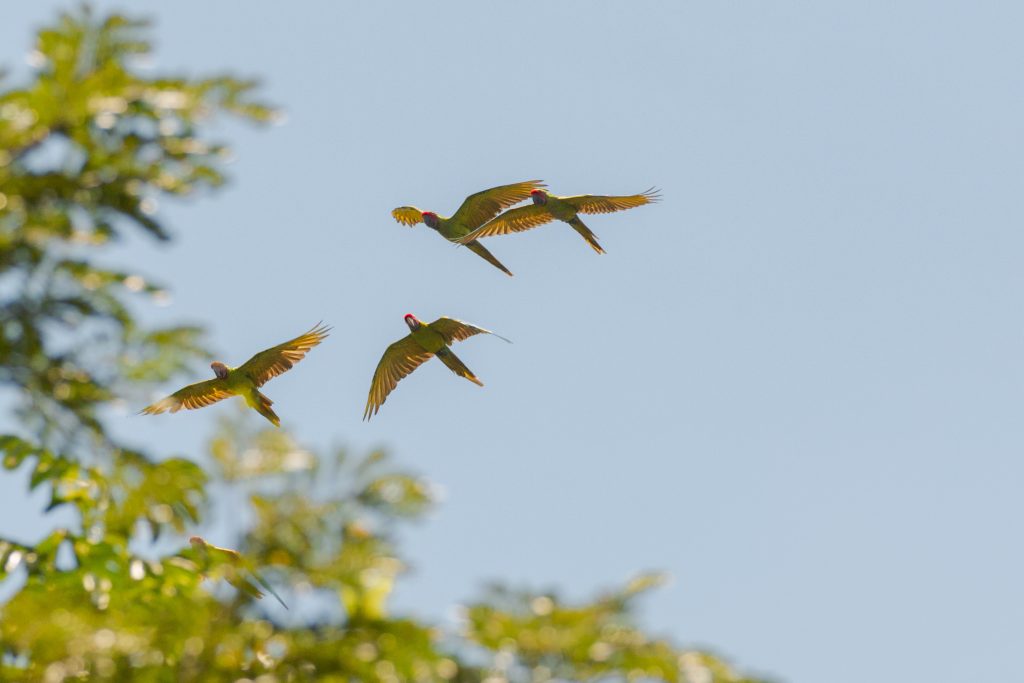
Suddenly, the macaws appear. Soaring gracefully above you in their natural environment. Witnessing these magical birds up close is an incredibly emotional experience. The macaws glide effortlessly, sometimes so close that you can feel the wind from their powerful wings. It’s truly a once-in-a-lifetime encounter.
The Great Green Macaw is in critical danger, with only 500 to 1,000 remaining in the wild worldwide.
That’s why reintroduction programs play a crucial role in their survival. For the last 12 years, The Great Green Macaw Reintroduction program has been working towards this goal — focusing on breeding and releasing these beautiful and vocal birds back into their natural habitat.
The Ara Project’s Nesting Program is crucial for survival
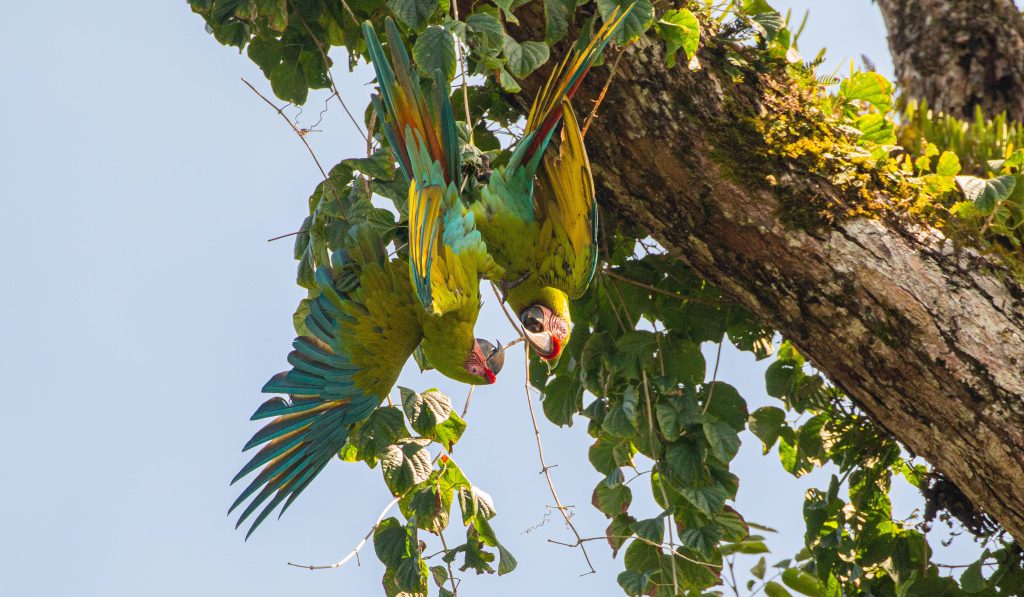
Nest construction is a significant challenge in this process, as these large birds require a spacious and predator-resistant location at least 25 meters high in a mountain almond tree.
To support this, the Ara Project has developed a nesting program that involves installing a 50-gallon plastic drum with a predator-resistant entrance into each tree. A team of three individuals performs this complex task, filling the nest with natural materials and monitoring it closely.
The volunteers change the bedding material, check the chicks for potential health issues or parasites, and place an ID ring on their leg a few weeks before they fledge the nest.
It takes about 17 weeks for chicks to grow a beautiful plumage and learn how to fly, eat, and survive in different weather conditions and avoid predators. These early days outside the nest are crucial for their survival.
After decades of absence, an endangered species makes its return.
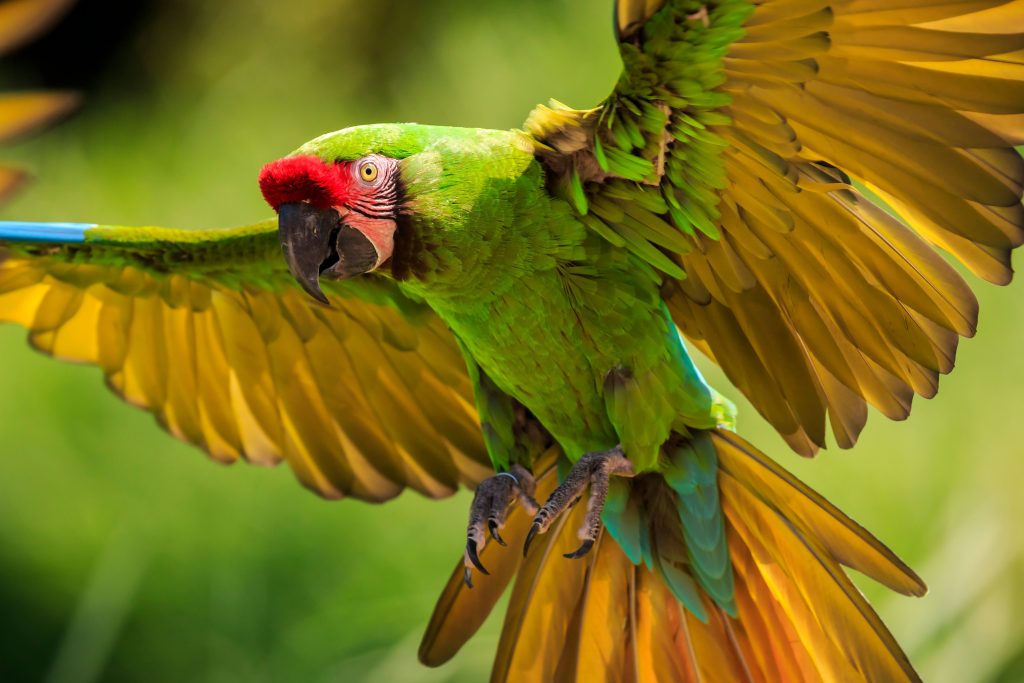
Ara Conservation Project has made a significant impact on the recovery of an endangered species. Residents of Costa Rica’s south Caribbean coast are grateful to see these magnificent birds returning after many decades of absence. It is an enchanting experience to hear their calls and see them fly gracefully each morning.
The survival of the macaw species in our region depends on the community’s recognition of its importance in the forest ecosystem. To promote this understanding, Ara Manzanillo has collaborated with the Government of Costa Rica, the Ministry of Environment and the Ministry of Education to implement an outreach and education program.
Outreach and Education Programs for students and local schools
This program includes workshops, engaging activities, and site visits tailored for small groups of students from local schools. Over 3,500 children from 25 schools in the southern Caribbean and Talamanca region have benefited from this program, fostering a deep connection between the younger generation and these magnificent birds and ensuring a brighter future for the Great Green Macaw and its habitat.
How can your guests get involved?
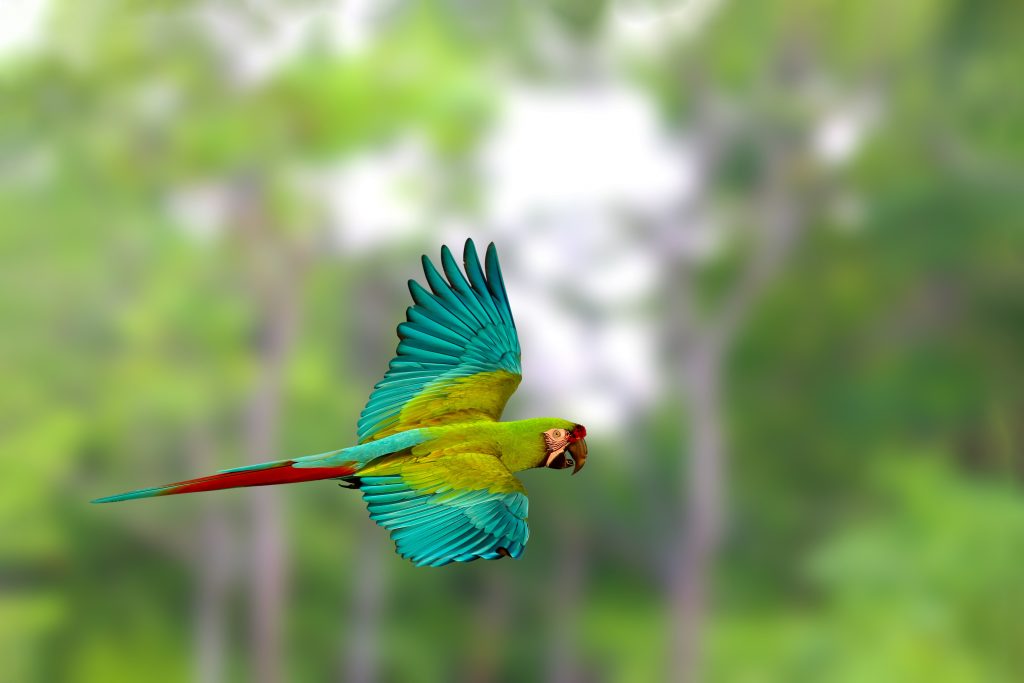
Visit the Great Green Macaw Reintroduction Station in Puerto Viejo: With their visit and awareness for the project your guests will carry on the movement.
We’ll gladly arrange this for you. Reach out to us here: mariaisabel@costaricantrails.com


